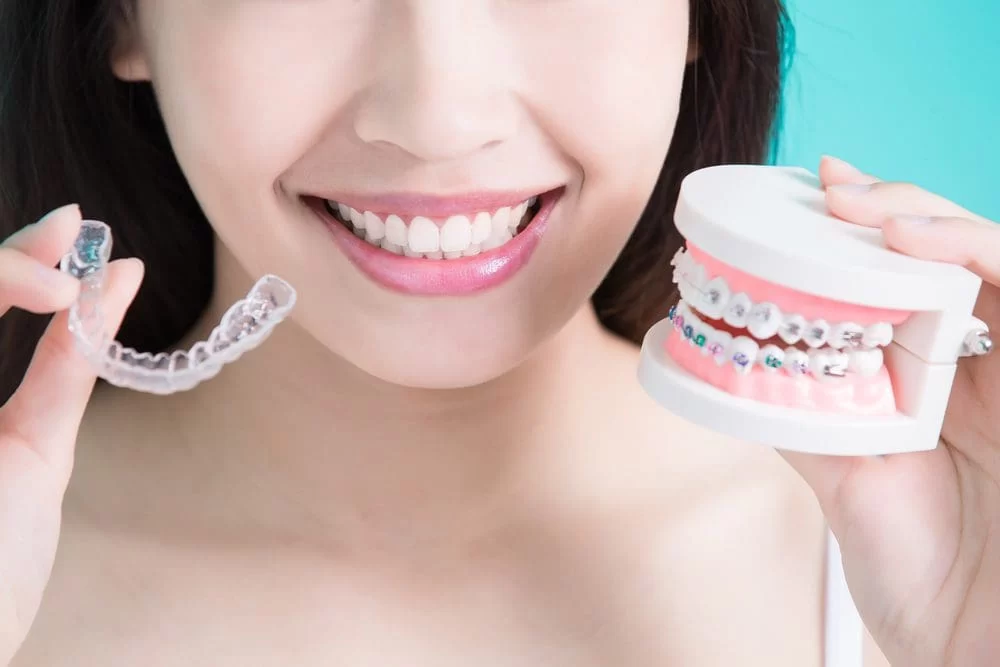
Exploring the World of Orthodontics: Achieving the Perfect Smile
When I first visited my orthodontist years ago, I had no idea what orthodontics actually entailed. I thought it was all about metal braces, the ones you see in movies and TV shows that seem to get more attention than the person wearing them. But as I soon learned, orthodontics is a whole field dedicated to correcting misalignments in the teeth and jaw, a field that offers much more than just traditional braces. So, if you’ve been considering orthodontic treatment, or are simply curious about what orthodontics can do for you, let me take you through the basics and explore the different options that could help you achieve that perfect smile.
What is Orthodontics?
Orthodontics is a specialized branch of dentistry focused on diagnosing, preventing, and treating irregularities in the teeth, bite, and jaws. The most common treatments involve aligning crooked teeth and fixing bite issues, but orthodontics can also address a wide range of dental problems that affect both the function and aesthetics of your smile. Through various devices like braces, retainers, and aligners, orthodontists help patients achieve not only a more beautiful smile but also a healthier, more functional mouth.
For years, the go-to solution for crooked teeth has been traditional metal braces. However, with advancements in dental technology, there are now many options available to those seeking orthodontic treatment. These range from clear aligners to ceramic braces, each offering its own set of benefits depending on individual needs and preferences.
The Role of Teeth Braces in Orthodontics
When you think of orthodontics, braces probably come to mind. I remember feeling a little nervous about the idea of wearing them, thinking I’d look like a teenager in a middle school yearbook photo. But braces have come a long way since then. Not only do they now come in various forms, but they are also far more effective at correcting dental issues than I initially realized.
Traditional metal braces are still one of the most common methods used to straighten teeth. These braces consist of metal brackets glued to the teeth, connected by wires that gently move your teeth into their proper positions over time. Braces can correct a wide range of problems, from overcrowded teeth to bite issues such as overbites and underbites.
Why Choose Metal Braces?
Despite the rise in alternatives like invisible aligners, many people still choose metal braces because they are highly effective and versatile. They can address nearly every type of orthodontic issue, from mild to severe misalignments. Plus, with advancements in technology, today’s metal braces are more comfortable and less bulky than ever before. They also tend to be more affordable compared to some of the newer options, making them an accessible choice for many patients.
What to Expect with Traditional Braces
Wearing metal braces involves a bit of a commitment. The treatment typically lasts anywhere from one to three years, depending on the severity of your misalignment. During that time, you’ll need to visit your orthodontist every few weeks to tighten the wires and adjust the braces as needed. The good news is, as the years go by, you’ll start to see your teeth gradually shifting into place, and eventually, you’ll have the beautiful smile you’ve always wanted.
Exploring Other Orthodontic Options: Invisible Aligners and Ceramic Braces
While metal braces remain the most popular treatment option, I quickly discovered that they aren’t the only choice available. Today, many patients prefer more discreet alternatives, such as clear aligners and ceramic braces, which are designed to be less noticeable and, in some cases, more comfortable. Let’s take a closer look at these options and how they work.
Clear Aligners: The Discreet Solution
Clear aligners are a game-changer for anyone who wants to straighten their teeth without the visibility of traditional braces. Made of clear plastic, these aligners are custom-made to fit your teeth and gradually shift them into their correct positions. I was amazed at how invisible they were when I tried them out. In fact, most people can’t tell when you’re wearing them!
One of the biggest advantages of clear aligners is that they are removable, which makes eating, brushing, and flossing much easier than with traditional braces. You simply remove them during meals or when you need to clean your teeth, then pop them back in when you're done. However, the key to success with aligners is wearing them as instructed—typically for at least 20-22 hours per day. If you’re disciplined and follow your orthodontist’s recommendations, clear aligners can be just as effective as metal braces.
Ceramic Braces: A More Aesthetic Option
If you’re looking for something less noticeable than metal braces but still want the proven effectiveness of traditional braces, ceramic braces might be the ideal solution. These braces are made from clear or tooth-colored materials that blend in better with your natural teeth. The wires used in ceramic braces are also less visible than the metal ones used in traditional braces.
Ceramic braces are an excellent option for patients who want a balance between effectiveness and aesthetics. However, they are typically more expensive than metal braces, and because the ceramic material is more fragile, they may require more care. But overall, they offer a discreet, yet effective, way to straighten your teeth.
Other Orthodontic Treatments to Consider
While braces and aligners are the most common treatments, there are other options depending on the specific dental issues you face. For example, expanders can be used to widen the jaw, making space for teeth to grow in properly. Similarly, retainers are used after braces or aligners to ensure your teeth stay in their new positions once treatment is complete. It’s always best to consult with an orthodontist to determine which treatment plan is right for you.
Choosing the Right Treatment for You
The world of orthodontics can feel overwhelming at first. But the key is to work closely with your orthodontist to determine which option best suits your needs and lifestyle. Whether you choose traditional braces, ceramic braces, or clear aligners, the most important thing is that you’re taking steps toward achieving a healthier, more confident smile.
As I reflect on my own orthodontic journey, I realize that, despite the initial discomfort and the occasional self-consciousness about my braces, the results were more than worth it. Today, I smile with confidence, knowing that I invested in both my oral health and my appearance. So, if you’re considering orthodontics, I encourage you to take that first step—it’s a decision you won’t regret!
For more information or to find the best orthodontic services near you, visit our website at Dentistry Toothtruth for personalized recommendations and expert guidance.







 Surprise Dental & Denture4.0 (777 review)
Surprise Dental & Denture4.0 (777 review) Noll Family Dentistry4.0 (95 review)
Noll Family Dentistry4.0 (95 review) Dr. Hecklin: Family & Cosmetic Dentistry5.0 (316 review)
Dr. Hecklin: Family & Cosmetic Dentistry5.0 (316 review) Woodlawn Dental Gallery4.0 (537 review)
Woodlawn Dental Gallery4.0 (537 review) Orlando Oral Health4.0 (49 review)
Orlando Oral Health4.0 (49 review) Evans Orthodontics4.0 (293 review)
Evans Orthodontics4.0 (293 review) The Importance of Oral Health Education During Pregnancy for a Healthy Pregnancy
The Importance of Oral Health Education During Pregnancy for a Healthy Pregnancy Best Tips for Brushing Your Teeth Properly for Healthy Gums: Essential Techniques for Oral Health
Best Tips for Brushing Your Teeth Properly for Healthy Gums: Essential Techniques for Oral Health Why Skipping Dental Checkups Can Lead to Bigger Oral Health Problems
Why Skipping Dental Checkups Can Lead to Bigger Oral Health Problems Advantages of Porcelain Dental Restorations
Advantages of Porcelain Dental Restorations How Can Diabetes Cause Tooth and Gum Problems? Preventing and Managing Oral Health Issues
How Can Diabetes Cause Tooth and Gum Problems? Preventing and Managing Oral Health Issues Healthy Habits for Promoting Good Oral Health and Hygiene: Tips for a Healthy Smile
Healthy Habits for Promoting Good Oral Health and Hygiene: Tips for a Healthy Smile